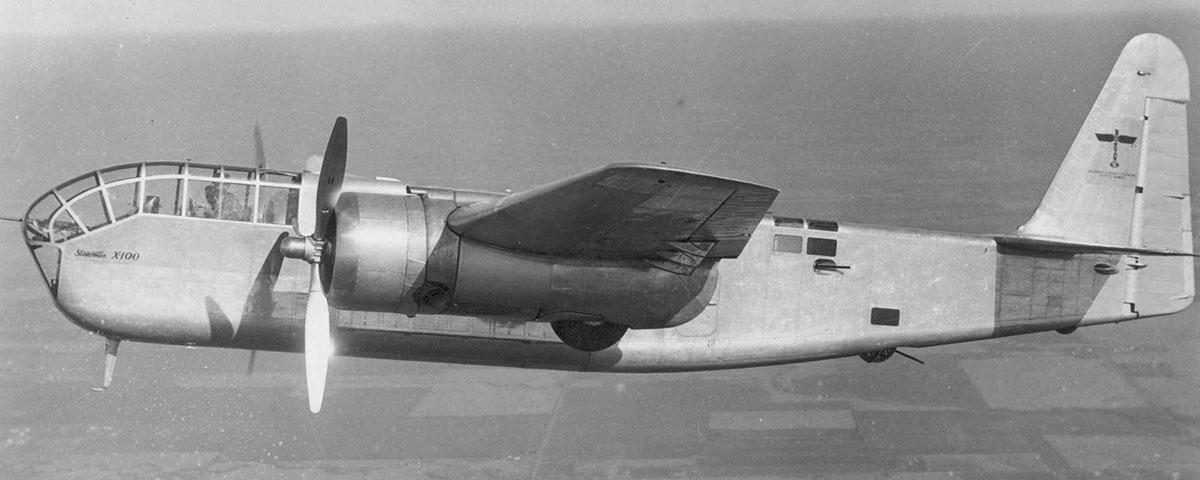The Stearman XA-21
The X-100 was the Stearman Aircraft Company’s entry in a 1938 competition for a twin-engine attack plane, which also included prototypes of the Douglas A-20 Havoc, Martin A-22 Maryland and North American B-25 Mitchell. Purchased and tested by the U.S. Army Air Corps under the designation of XA-21, the Stearman was an all-metal, shoulder-winged monoplane with a 65-foot wingspan and a length just over 53 feet. Two 1,400-hp Pratt & Whitney R-2180-7 Twin Hornet radial engines powered it to a maximum speed of 257 mph. Armament consisted of 2,700 pounds of bombs, four wing-mounted .30-caliber M1919 Browning machine guns, one flexibly mounted .30-caliber gun in the nose and four more .30-caliber weapons firing aft.
The most visibly unusual feature of the original XA-21 was its glazed nose and canopy, streamlined against the fuselage in a manner similar to that of the late-model Heinkel He-111. As with the Heinkel, however, complaints of restricted and distorted forward vision during testing led the USAAC to order the bomber rebuilt with a more conventional stepped nose and cockpit structure (as in the earliest versions of He-111). Although that alteration did not significantly affect performance, the XA-21 was ultimately passed over in favor of its soon-to-be famous (and nicknamed) competitors.

